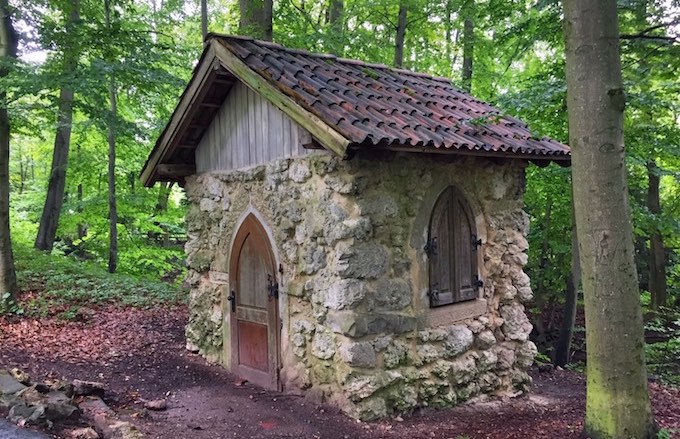Bereits im 11.Jahrhundert begannen die Benediktinermönche des Klosters Saalfeld an vielen Hängen in Coburg Wein anzubauen. Nach und nach entstanden an vielen Süd-Hängen Coburgs Weinberge. Bereits auf dem Isselburg-Kupferstich von 1626 sind neben dem Galgenberg viele Weinberge zu erkennen. Belegt ist, dass beispielsweise 1679 alleine im Coburger Stadtgebiet 1300 Eimer Wein (entspricht mehr als 800 Hektoliter) gekeltert wurden.
Allerdings hat wohl der Coburger Wein nicht zu den besten Weinen gehört, mehrfach wird vom Säuerling berichtet. Gegen Ende des 18. Jahrhundert werden die meisten Weinberge in Gärten gewandelt. Durch den klimatischen Wandel war der Wein nicht mehr genießbar, ausserdem zog es den Bewohner der mittelalterlichen Stadt ins Grüne, durch den Druck der Bürger gestattete der Herzog, Gärten anzulegen und Gartenhäuser zu bauen. Der Weinanbau wurde aufgegeben.
Der letzte der "Festungsberg-Süd" Weinberge gehörte zur Veste und befand sich unterhalb des Eingangsportals. Die kleine Tür, die einst zum "Herzöglichen Weingarten" führte, ist heute noch zu sehen.
Letzte Zeitzeuge dieser Nutzung sind ebenfalls noch zu sehen: das ehemalige Weingartenhaus, gerne auch als "Hexenhäusle" bezeichnet und die "Weinstraße", die 1883 ihren Namen erhielt, um an die Zeit des Weinbaus zu erinnern.
Doch nun zum Cache:
An S1 findet ihr einen Wegweiser mit 3 Hinweistafeln.
Sollten 4 Tafeln vorhanden sein (Winterzeit), ignoriert die Tafel mit Aufschrift "Sommerweg"!
- A = rote Zahl (Format xxxx)
- B = weiße Zahl (Format xx)
- C = Wie oft kommt Coburg auf den Tafeln vor
-
Das Final findet ihr bei:
N 50º (C + 2) * A + B * B / 2
E 10º A * B + 9 * C * B - 4

International Version
Starting in the 11th century the Benedictine monks of the Monastery Saalfeld began producing wine in at many hillsides in Coburg. Already on the Isselburg-engraving by 1626 many vineyards can be seen next to the gallows. In 1679 alone in the city of Coburg 1300 buckets of wine (equivalent to more than 800 hectoliters) were pressed.
However, probably the Coburg Wine has never been one of the best wines, repeatedly reported to be acidulous. In the late 18th century, most vineyards were transformed into gardens. Due to the climatic changes the wine was no longer edible, plus the inhabitants of the medieval city were attracted to the countryside, so by the pressure of the citizens the Duke allowed planting gardens and to build garden sheds. Viticulture was abandoned. </ P>
The last of the "Festungsberg-South" vineyards belonged to Veste and was below the entrance portal. The small door that once led to the "Ducal Winegarden" is still visible today.
Last witness of these terms can also be seen: the former vineyard house, often referred to as "Hexenhäusle" and the "Weinstraße", which was named in 1883 to remember the time of viticulture.
How to find the cache?
At the given coordinates for S1 you find three signs.
If there are 4 signs (wintertime), ignore the sign that says "Sommerweg"